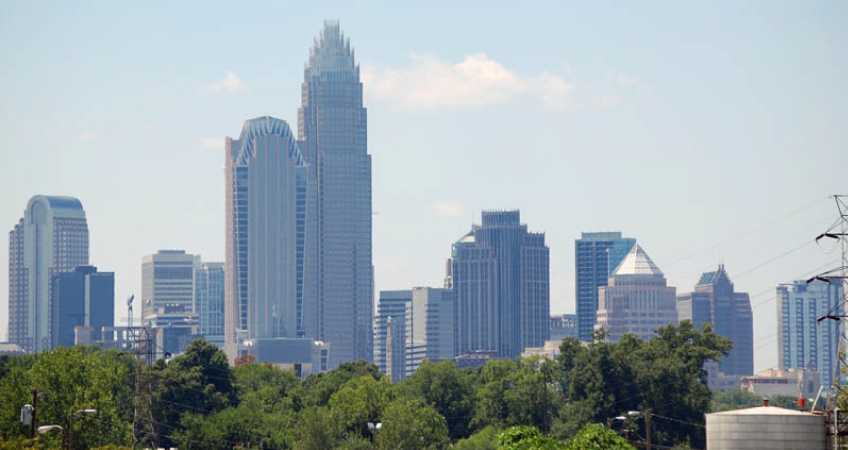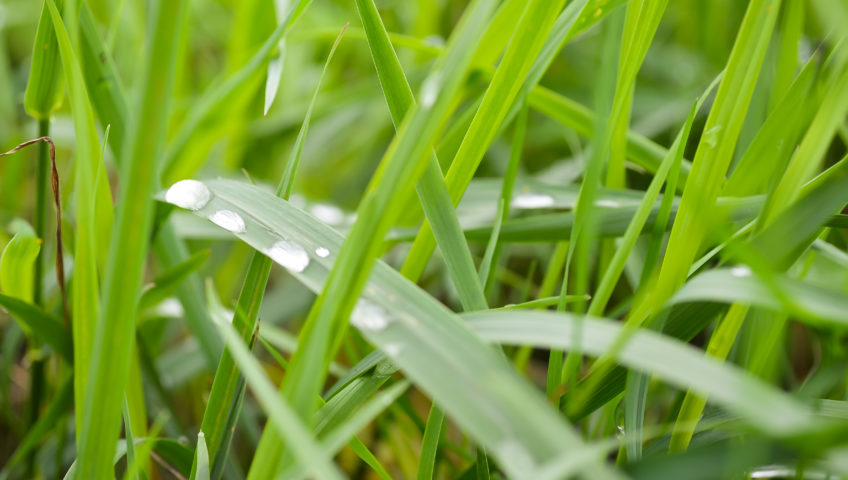
Tall Fescue makes up 80% of the lawns in Charlotte. 15% are Bermuda while Zoysia, Bluegrass, Ryegrass and Centipede make up the other 5%.
Tall Fescue is considered a cool season grass and performs best in the cooler temperatures of spring and fall. During the spring and fall, fescue lawns standout with rich green color and are very attractive. It has a clump type growth habit which means it has limited spreading ability. The only way to repair a damaged fescue lawn is reseed it. Re-seeding or over-seeding can only be done successfully in the fall and requires aeration and consistent watering for 21 days. As a cool season grass it tends to shut down growth and turn brown during the heat of the summer. It also tends to be a “water hog” when temperatures exceed 85 degrees on a consistent basis requiring a minimum of 1 inch of water per week to maintain acceptable color and growth. Tall Fescue is also very susceptible to brown patch fungus although some of the improve hybrids have shown some resistance to the disease. Fescue lawns do grow well in partial shade conditions. If you have Fescue you can expect a great looking lawn from late February through May and from mid September through mid November. Depending on the weather, it can look good in December and January, but expect color and growth issues June through August. Fescue lawns are the least expensive lawns to establish when starting them from seed, but are expensive if establishing with sod.
Bermuda is considered a warm season turf and performs best in the warmer weather we experience in the summer months. When the Fescue is brown in the summer, Bermuda is at its best with great color and texture. It does require irrigation in the summer, but 1/3 that of Fescue. Bermuda is considered a self-repairing, spread type growth grass. It has underground spreading roots call rhizomes and surface spreading roots called stolons. It does not require seeding for damaged areas, but its aggressive growth results in additional edging and bed weeding. Bermuda is relatively disease free. Bermuda performs poorly in the shade. The biggest drawback for Bermuda is the fact that it goes dormant and turns completely brown after the first frost and doesn’t green-up until mid April. During the dormant period, the turf requires extensive weed control as there is no competition to keep the weeds at bay. If you have Bermuda you can expect a great looking lawn May through September, but you’ll have to put up with brown turf November through April. Some folks over-seed the Bermuda with annual or perennial rye grass in October in order to have a green lawn while the Bermuda is dormant, but this practice does cause some issues with delaying Bermuda’s normal spring green-up. Bermuda has to be established by laying sod. There are common varieties of Bermuda seed available, but establishing Bermuda lawns from seed is a long, hard process with a low success rate.
As you can see, each grass type has its advantages and dis-advantages. Many lawns in Charlotte are mixed lawns with both grasses growing together. At Plant It Earth we understand these factors and will deliver the best possible results regardless of what type of grass you may have. We are always available to discuss your particular situation and give you recommendations. Call us today for a free consultation and lawn analysis.



